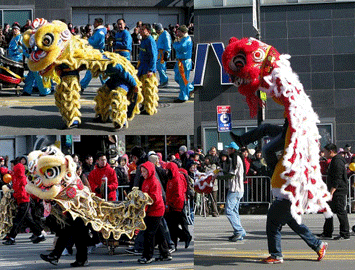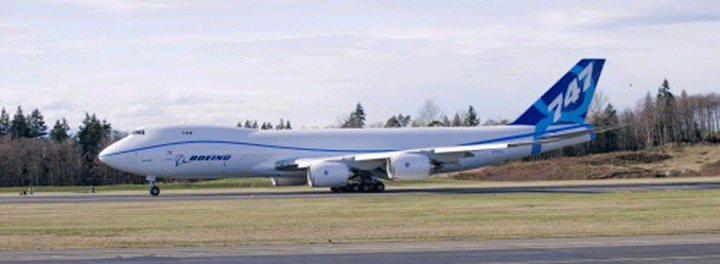 A
Chinese New Year Story A
Chinese New Year Story
We cannot remember the last time Chinese Lunar New
Year occurred on the same date as Valentine’s Day but that is
certainly the case this coming Sunday February 14 as Year of the Tiger
gets underway and is celebrated as is also the universal day of love,
Valentine’s Day.
What a great opportunity for family and special lovers and great meals
surrounded by lots of flowers.
And what a great day to be Chinese!
But if you are in New York a great Chinese meal is an around the clock
24/7/365 moveable feast.
It is apparent to almost anyone traveling
on business that there isn’t enough time to enjoy authentic local
scenery.
Dinner that hasn’t been worked
into the business schedule becomes an after-thought, a quick twelve-dollar
burger served on a tray with a moist towelette in some forgotten hotel
room.
We are so quick to let business travel
spoil the excitement that comes with going to a new place. The town
you’ve been zipping through for the past couple of days could
be the grist for your memory’s mill, and sometimes culture shock
can be cathartic.
At the very least, a side step journey
into town can afford a little life experience and a few polite conversations
with the locals.
I recall a Sunday alone at the downtown
Mandarin Hotel in Taipei, right near Nanking Road. The Mandarin is a
crew hotel. Pilots and cabin crew have a reputation of being tight with
a buck.
Most pilots like to maintain a fairly
high profile life style, while cabin crew never has any money.
Sometimes
I think cabin crew invented stew. They always seem to be planning potluck
dinners.
The old joke: “Hey, this food tastes
different. Did somebody wash my bowl or something?” barely affords
a chuckle from these chowhounds.
The Taipei Mandarin is always a good
buy. The place is clean, if a bit faded. The restaurant, which serves
Chinese and American breakfast around the clock, is always a good bet.
The Mandarin is also equipped with a
staff of husbands and wives who seem to live and tend to individual
floors.
You can be sure a staff member will see
you to your door following check-in, and don’t be surprised when
your arrival is heralded with hot tea and cookies.
Once I stumbled into my room after a
19-hour flight and dived straight into the shower, only to discover
my disheveled heap of clothes had been neatly pressed and hung.
Lots of expatriate fliers and business
types stay at the Mandarin.
Anytime, day or night, Sky King is meeting
under the gaze of Terry and the Pirates and Smilin’ Jack, all
comic book heroes of 1930-40’s aviation.
After arriving late one Saturday and
working all of the next day on a story, I decided it was time to get
out. The T.V. was rattling on in Chinese and English alternatively,
about some sporting event that no longer held my interest. I decided
to take a walk to find something to eat and maybe pick up some bottled
water.
It was drizzling lightly, a warm, early
spring evening. Sundays anywhere are the same.
It doesn’t really matter where
you are in the world. There will be more places open on the day after
the apocalypse than on any given Sunday.
I stopped at a small restaurant that
looked busy. Business in a restaurant is a good sign in any country.
The first thing I noticed was how the place smelled.
This joint smelled great.
A couple of beers and a plate of fried
rice later, I left my small side table completely satisfied.
Around the corner from the restaurant
I found a group of people laughing and joking in the staccato tics of
quick and easy Chinese conversation. For a moment I thought that I had
missed the place the cool crowd supped. I felt a need to get the name
and address of said cool place so that I could return at a later time.
I began to make my way to the group.
It was then that a familiar sign struck
me, a sign emblematic of gaudy, tacky Americana: the flashing red and
white striped logo of T.G.I. Fridays. I laughed, and wondered if my
joke was funnier than the joke shared by the cool crowd. I had not come
halfway around the world to eat burgers and fairy food.
Now, whenever it’s time to hit
the road again, I think of that damp Sunday in Taipei. It reminds me
to get out and experience more of the local scene.
I always wonder about people who come
to New York from other parts of the world insisting that the best restaurants
are in Manhattan, simply because they’ve read that somewhere.
Let’s set the record straight.
Any stiff can read a review and fork
over a lot of cash.
The idea is to get out, get fed, have
some fun and not get stuck paying through the teeth.
Try something new, even if it’s
in small amounts.
Live a little.
You may not pass this way again.
 |
 |
The Chinese food being
served up near our offices at LaGuardia Airport in Flushing, New York
City is incredible, and you can basically eat until your hands get tired
for just a couple of bucks.
I would go so far as to say that several
of the places in Flushing are better than the majority of restaurants
in Manhattan and, I dare say, in Taipei as well.
Since this is the season to celebrate
Chinese New Year, and New York is a great city for Chinese food, here
are some tips for where to go the next time you land at JFK or LaGuardia
Airport. These restaurants are just a short cab or bus ride from the
airport hotels.
If you are dining alone you may feel
funny about it. Get a prop. A book or magazine is fine, but if you’re
really dexterous bring your Palm of iPhone to fiddle with while you
wait for your meal. Look up every now and again to check the scene out.
Maybe you will find yourself talking to a complete stranger, maybe it
will just be time spent following the pattern in the wallpaper. Regardless,
you will leave yourself open to the environment without being bored.
Just remember, like any good scout, you
must be prepared, in every sense. You may think you have everything
covered, what with your magazine and your Palm or iPhone, but always
be ready when the host asks you if you might consider sitting at a table
with other diners to make more room. Anything can and will happen.
Chinese restaurants in New York have
lots of big, round tables. If a restaurant starts filling up with loners,
couples and small families, it is not unusual to find strangers sitting
together at a table. It works great when you’re alone and it’s
busy because almost everyone gets seated right away. And you get an
easy, insider look into the different lives inhabiting the city. Plus,
if you just had a tough day in business there is nothing better than
the anonymity of a table full of merciful strangers.
Chinese restaurants always bring a pot
of tea and a menu, giving the diner a relaxing couple of minutes to
check things out.
Family style dining is an easy and appropriate
meal at any Chinese restaurant in New York. It always feels like going
back to summer camp and sitting at a table with a variety of choice
meal items. If you’re sitting at a table with a meal already in
progress it’s like seeing the Lotto numbers before they are run.
If you observe your new best friend and fellow diner coveting your Bok
Choy, don’t be afraid to tell him how it tastes. Sharing what
is good is always a great icebreaker.
Here are a few places worth remembering:
Joe’s Shanghai. 136-21 37 Ave. Flushing
NY 11354 (718) 539-4429
www.joeshanghairestaurants.com
Located smack-dab in the middle of the
‘New Chinatown’ in Flushing, Queens, Joe’s Shanghai
has been hailed as a real treasure of the area. On balance this is the
best Chinese restaurant in New York. Less formal and more family oriented,
Joe’s features steamed buns of pork or crab. They are served a
dozen to an order inside wicker baskets. There are those who duck in
simply to partake in that delicious delicacy. Joe’s also serves
delicious Shanghai fried rice, a lightly turned and simply prepared
dish with small bits of scallion and egg. Scallion pancakes are an excellent
accompaniment to any meal at Joe’s. Joe’s is constantly
rated in the top ten New York Chinese eateries and serves until 11 p.m.
weekdays and midnight Fridays and Saturdays. Just around the corner
from Joe’s is C&J Restaurant.
C&J Restaurant, 136-14 38th Ave., (718)
353-3366.
C&J Restaurant is a great choice for
business meetings and full-service presentations with all the trimmings.
Half a block away is Homefood, at 38-05 Main Street, a narrow and deep
place with cooked ducks hanging in the front window. The foods is very
good, quite plentiful, and dirt-cheap. Luncheons are all you can hope
for at less than five bucks.
Another aspect to enjoying Chinese food
is Dim Sum. Dim Sum is served almost everywhere, especially in the better
Chinese restaurants.
One such place, Gum
Tong Gung at 133-30 39th Avenue in Flushing, does it better than
anywhere else. Dim Sum is predominantly
served earlier in the day and especially during lunch, but at Gum Tong
Gung you can get a variety of delicious choices anytime.
Carts laden with round, metal Tiffin-like
pans are wheeled out carrying dozens of different kinds of Dim Sum.
The wait staff circles the restaurant offering the different choices,
only leaving to refill their stock. If you don’t like something,
you don’t have a whole dish to contend with. If you love something,
you can just keep choosing it, and all the while your waiter will keep
track of what you have ordered.
Steamed dumplings with shrimp, chicken
or beef; friend eggplant roll; pork congee with preserved egg; braised
duck feet; turnip cake - there are a hundred choices on the menu.
Gum Tong Gung seats up to 250 people,
though from the look of it I imagine I could open a gym and house the
S.S. Titanic at the same time.
On Sundays it is worth the trip just to
see the servers wheel around the room. They are a show in and of themselves.
At $1.95 to $3.00 a serving, Dim Sum,
that small taste of delicious Chinese cuisine, is a bargain.
The Flushing area is a hot zone for Chinese
food, and at this point you could close your eyes and point and still
hit an excellent restaurant. But Flushing has also become a “destination”
of sorts.
Not only is the food great, but also it’s
so easy to just check into a hotel and go shopping, or see a movie.
The train into the city lies in the heart of Main Street, close to all
restaurants and shopping, and one stop from The Mets at Shea Stadium.
Savvy business travelers can take the
Q48 bus from LaGuardia right to the center of town. A cab from JFK costs
less than 20 dollars anytime.
Flushing also offers a variety of Japanese,
Indian, Malaysian, Vietnamese and Korean Food.
The Sheraton LaGuardia East Hotel at 135-20
39th Avenue has 173 rooms and is centrally located. It is the perfect
full-service place to set up operations. (718) 460-666; North America,
(888) 268-0717; Hong Kong, (800) 90-0376; Taiwan, 0080-10-3852.
Wherever you find yourself landing, after
a two or ten or fourteen hour flight, soaking in the shower and washing
the business out of your body, remember to get out and explore your
surroundings a little. There is more to this world than business; there
are all the many hours in between.
New Year parade in Flushing is February 20.
Geoffrey
To our readers worldwide
Kung Hei Fat Choy. |
|







